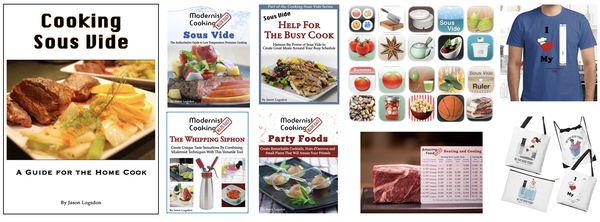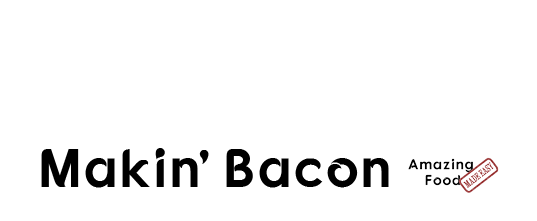 Written by Jason Logsdon
Written by Jason Logsdon
Keys to Succeeding With Products and Services
Click to discover how to serve your Fans and grow your incomeI wanted to share with you some of my tips for creating products and services to help ensure you will be successful.
How to Find Products and Services
Finding products for your audience is a really simple concept - find holes in the market and then create products to fill them. But like most simple concepts, it's the execution that is the hard part.
It can be hard to find those holes. I tend to look for areas where my readers keep asking for help, since it shows a lack of information in that area. I also focus on things that they tend to do time and time again, either actions that can be made easier or packing information that they need regularly into a more easily accessible format.
You can read more information about Harnessing the Power of Products Your Readers Need and How to Choose a Cookbook Subject.
People are HAPPY to Pay to Solve Problems
A lot of people get really nervous charging for their content, feeling like it's not worth it and their readers will be mad at them. Well, have you ever bought a cookbook from a favorite author, or a piece of kitchen equipment that you needed?
And assuming it met your needs, did you feel ripped off because they didn't just give you the book or the tool for free? Of course not, right? That's because we are all happy to pay for things that solve a need for us, and your readers are no different.
So it can be a mindset shift, thinking of charging for content or tools, but it's something that is critical if you really want to start making more money from your blog. Remember, if your products are good, your readers are HAPPY to pay for them.

Have a Niche
My most important tip is to find yourself a niche. This applies to producing products, creating a successful blog, publishing cookbooks, or honestly, starting nearly any other type of business.

Almost every product I have put out for a small niche has been "successful" and most every time I've gotten greedy and attacked a larger market it hasn't worked as well. If you are competing with Serious Eats, Cooks Illustrated or Martha Stewart or Snoop Dogg you are going to have a lot harder time than if you are a big player in a smaller niche. You'll still be able to sell to your fans and make some money, but it's much harder to break into the larger market and to stand out.
It's so alluring to look at a big market like "vegan", "grilling", or "pressure cooking" and realize that you can create something slightly better than what is out there. But "slightly better" is a lot different than there being a need in the market, and you'll struggle to break into those already saturated areas. It's better to find what your specific take on the subject is, and really drill down to what makes you "you". It's a smaller market, but if you dominate it you will gain a lot of credibility, and even sales, in the overall market, allowing you to slowly expand. And luckily, with blogging you can dip your toe in the water in other areas with a blog post here or there, you don't have to do a full pivot.

It is so important to find a niche that you can own and be an authority in. Find your niche and attack it, and create the content readers in that niche want, while resisting the temptation to expand into larger markets too quickly. And your chances for success will sky rocket.
I mean, this has outsold many of my books, and I don't know if you can get more niche that goats in trees, but it's successful because they know their market. As weird as it may be...
Take it One at a Time
I cover a lot of ways you can grow your income, but I don't want you to feel overwhelmed as we go through them all. I've been trying to monetize my site for the last decade, and I didn't do all of them in one day either. So pick one or two to start with, give them a shot, and then you can slowly add on from there. Each one will incrementally add to your income and they will continue to build on each other, creating a loyal fan base and increasing your chances for future success.

There is Not One Ideal Approach
Another caveat is that one approach doesn't work for everyone. We all have different goals, different focuses, different audiences, and different strengths and weaknesses. What works for me, might not work for you, and vice versa. I share what I've done to make money from my blog, and hopefully you can take that, and apply it to your own circumstances. Tweak it to take advantage of your strengths, and best apply to your readers.

Just like when you are skiing, there is more than one way to get where you are going. You don't need to follow everyone else, you can find your own path.
It also helps to figure out what your goals are. Are you looking to create a full-time income that will replace your current job or just generate an extra grand every month or two to supplement your current household income?
Are you looking to put in 30 to 40 hour weeks on your blog, or do you want something that makes money even when you are on vacation and you just put in a few hours here and there?
All of those are 100% valid goals, but the way you approach monetizing your blog will be different for each. So give some thought to what your goals really are, and how the monetizing options we discuss can help you get there.
Failures Will Happen
Between books, smartphone apps, courses, and physical products, I've probably launched about 50 different things to my audience. Some have done great and some have done poorly. And I still really don't have a good idea of what will work or not.
There is no real great way to ensure a product will be successful. So don't feel bad if some don't work as well as you hoped. If 100% of your products are successful, you can go get a job at Coke or Random House Publishing making millions of dollars a year, because even the experts there can't predict product successes.
Therefore, if a product doesn't look like it's going to work out, don't keep putting more time and energy, and possibly money, into it. Maybe it can be saved with some tweaks or an overhaul, but often it's better to just to move on to another idea.

Start Small, Continually Improve
Because failure is pretty likely, it can be really helpful to incrementally develop products when you can. If you have a "great" idea for a video course, maybe start with a 5 page PDF that outlines the critical information the course would have in it. See if people download and use that PDF.
If not, then maybe the course isn't such a great idea after all, and by testing it you just saved yourself a few months of work. If they do like it, then maybe put out a 50-75 page PDF that has all the content in it the course would, and charge $5, $10, or $20 for it. Do people buy it?
If not, you can try adjusting pricing or the content, or move on to another idea. If they do buy it, then create the videos around that content and package it into the course like you had initially planned. This is also an approach Pat Flynn espouses in his book Will It Fly.
Another benefit from this approach is that your content will be tighter, since you've been incrementally editing and taking in feedback. And you also will have a nice list of people who may want the course because they used the free and paid PDFs, making them perfect candidates for the full course.
Start Small to Learn
I've also found it very useful to start small when I'm working in a new medium. The first time you create an email course, branded shirt, or video series, it's not going to turn out the way you wanted. Doing a much smaller, but still valuable one, allows you to learn so much about the process, that when you attack your biggest idea it'll be that much stronger.
We all want to jump right in and put out an awesome product, but doing a smaller, less visible one is great practice. It will help you learn the process, including what works for you and your readers, and iron out many of the wrinkles you will run into.
You will learn so much during this process that your next product will be an order of magnitude better than it would've been otherwise.
You CAN Do It

My last tip, is that You Can Do It.
Don't be intimidated - most of the stuff we will cover is new, but it's not that hard. It's no harder than blogging, that's for sure. If I told you 5 years ago that to be a blogger you just needed to install WordPress on a server, set up a template, learn to take photographs, write proper recipes, import photographs and optimize then for a website, then optimize your SEO and social media presence, you'd have thought it was impossible too...but here you are.
So if one of these options sounds good to you, but there's several steps you don't fully understand today, don't worry, you've got it. You can learn what you need, you can lean on people that have done it, like me, and you can be successful.
I believe in you, so you should believe in yourself!
What are you tips for succeeding with products and services? Let me know in the Makin Bacon Facebook Group or the comments below.
 Hi, I'm Jason Logsdon! I'm an adventurous home cook and the head writer and photographer for Amazing Food Made Easy. I grew my income to 6-figures by focusing on serving my Fans by providing massive value, and I want to help you do the same.
Hi, I'm Jason Logsdon! I'm an adventurous home cook and the head writer and photographer for Amazing Food Made Easy. I grew my income to 6-figures by focusing on serving my Fans by providing massive value, and I want to help you do the same.














